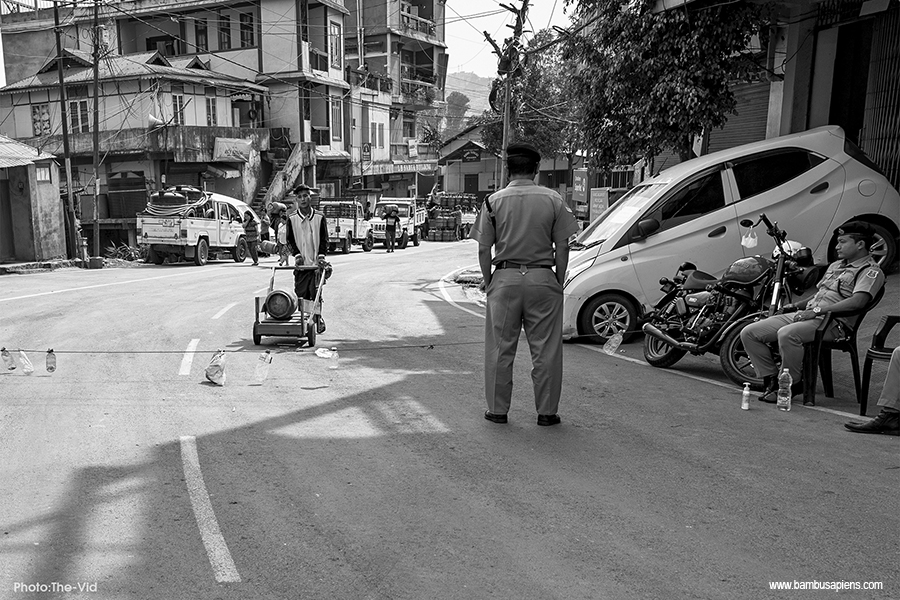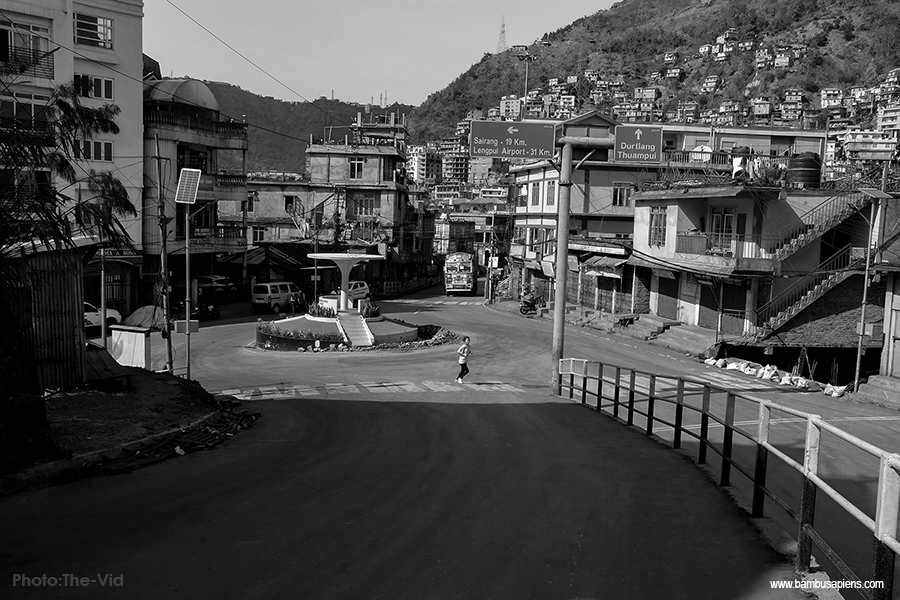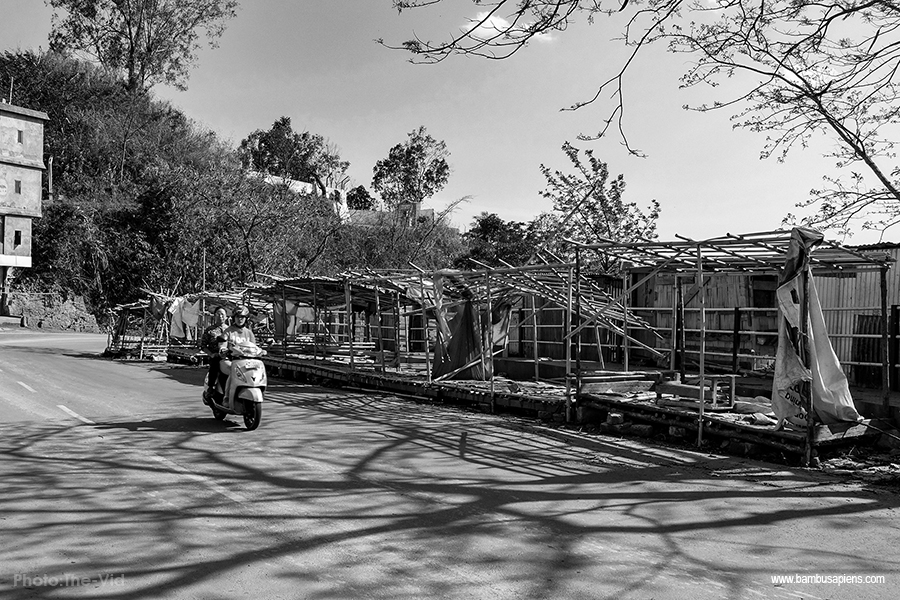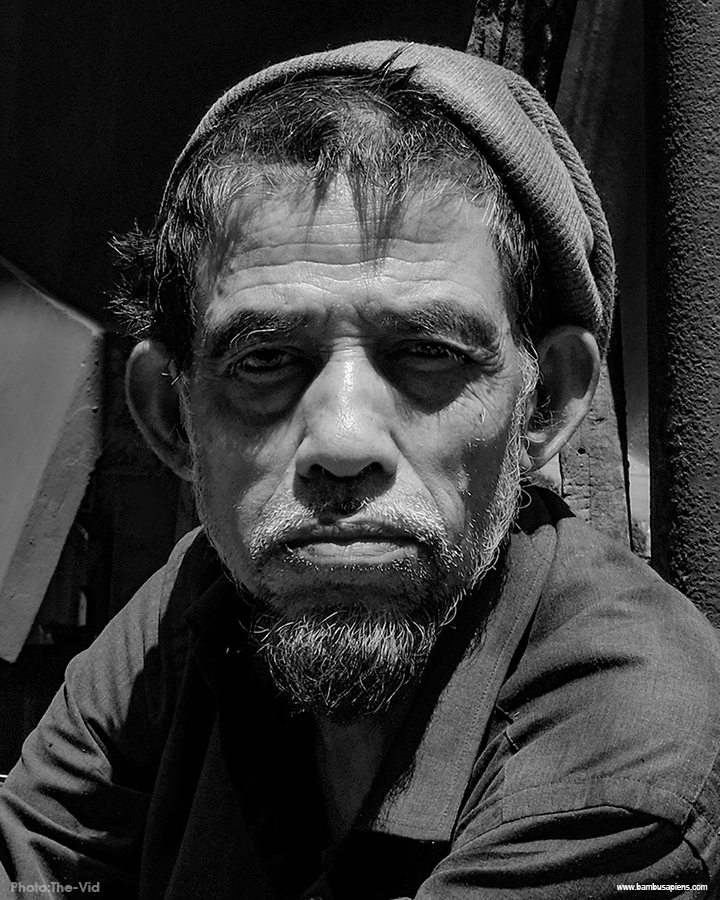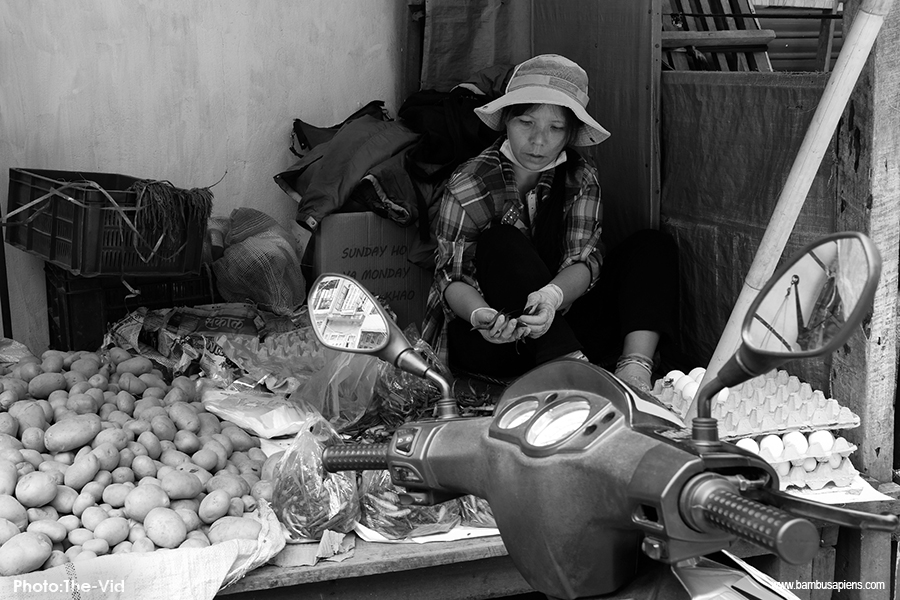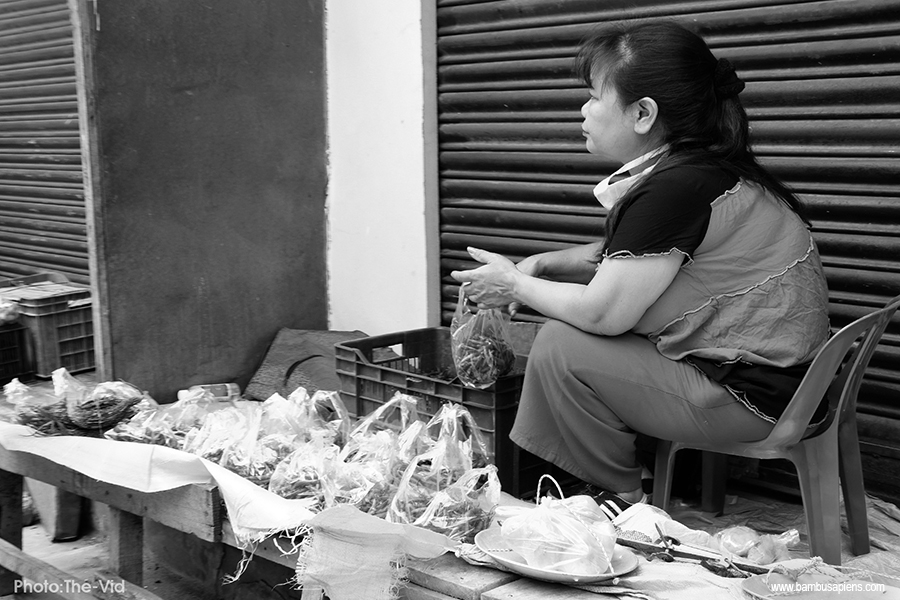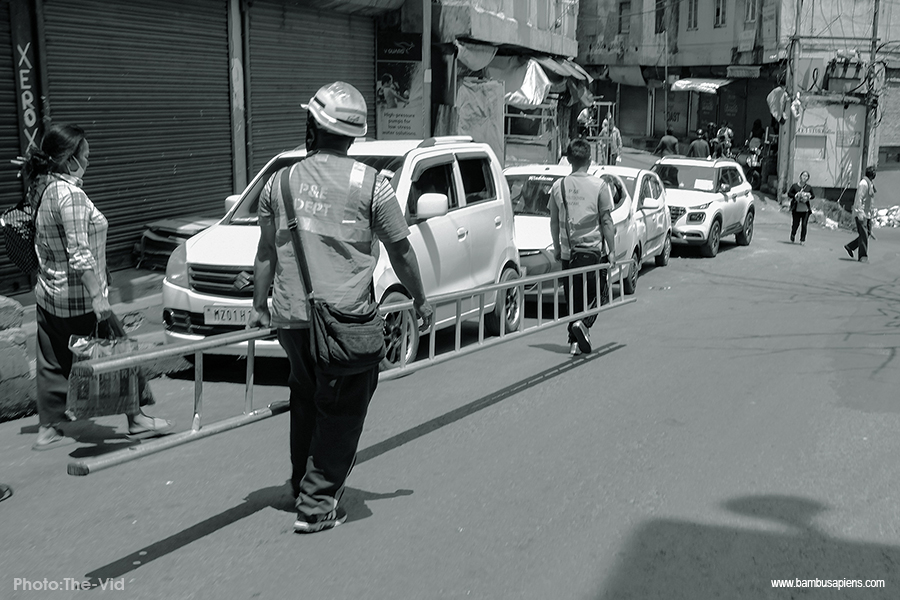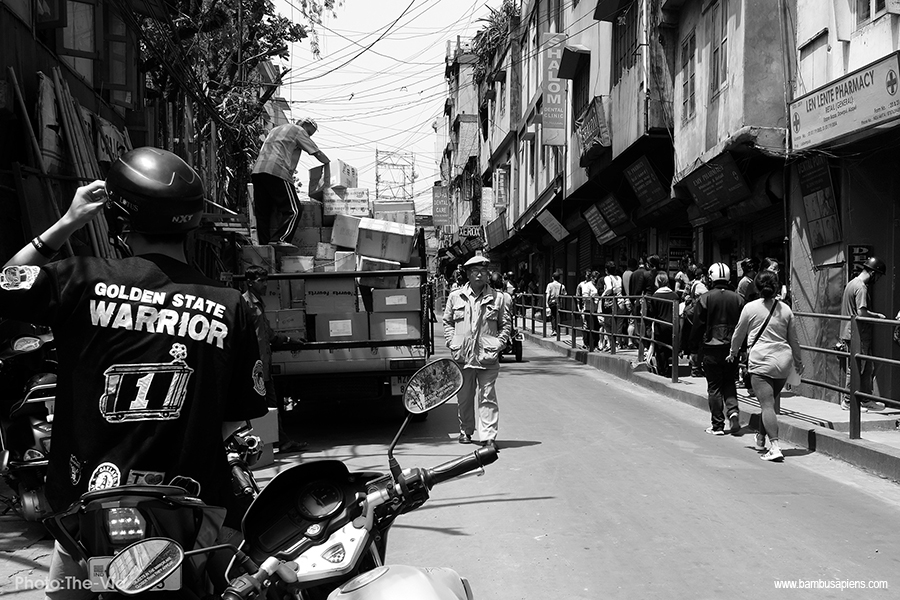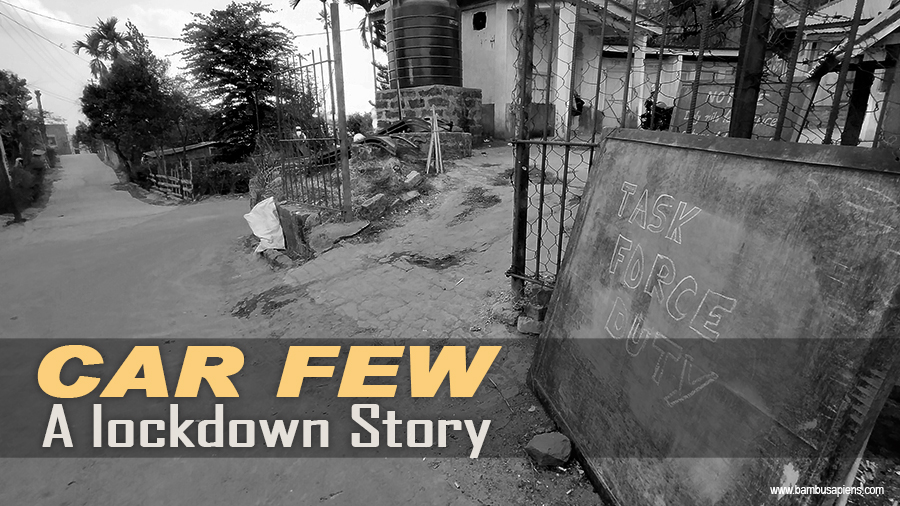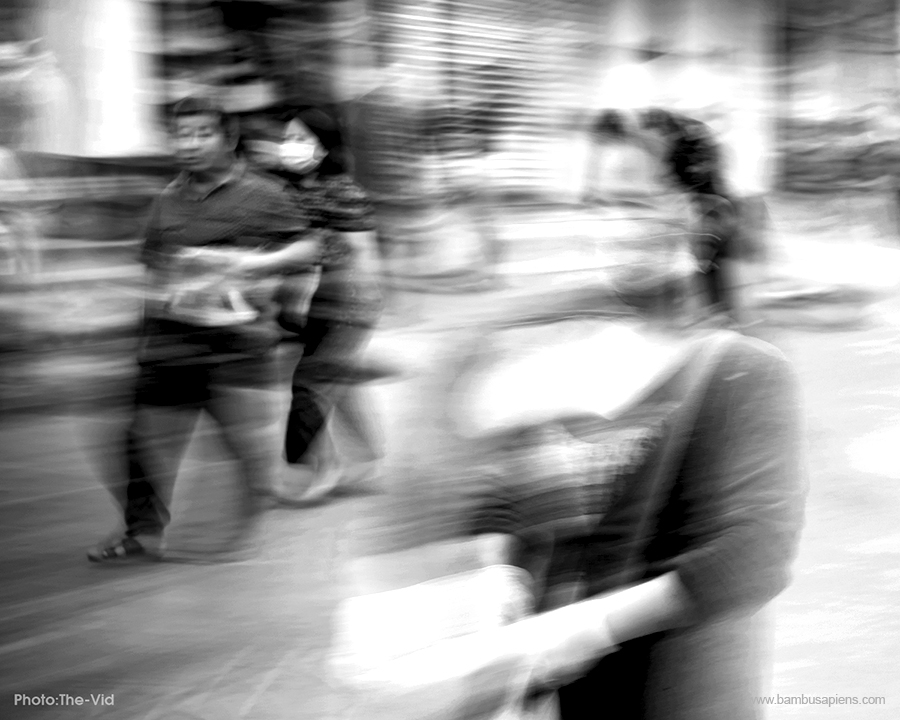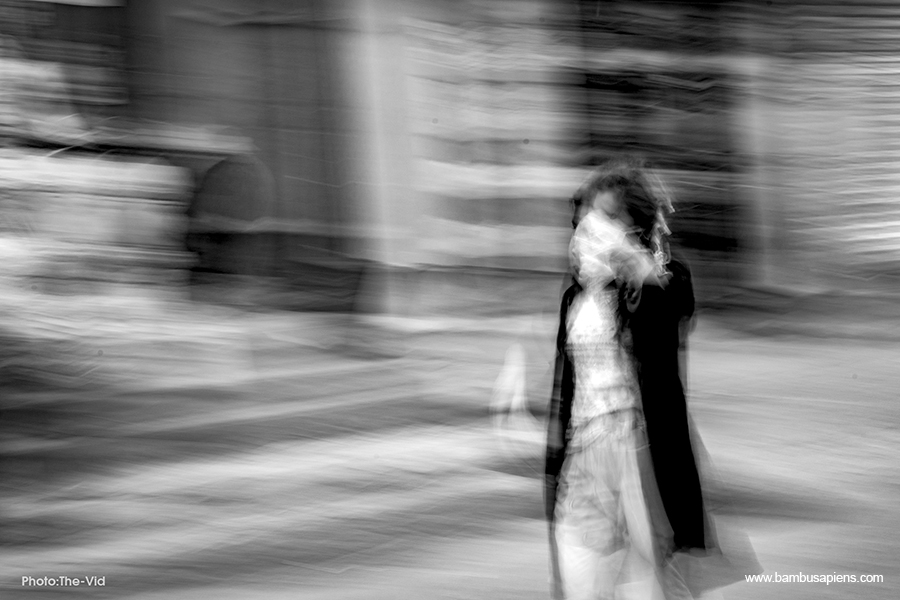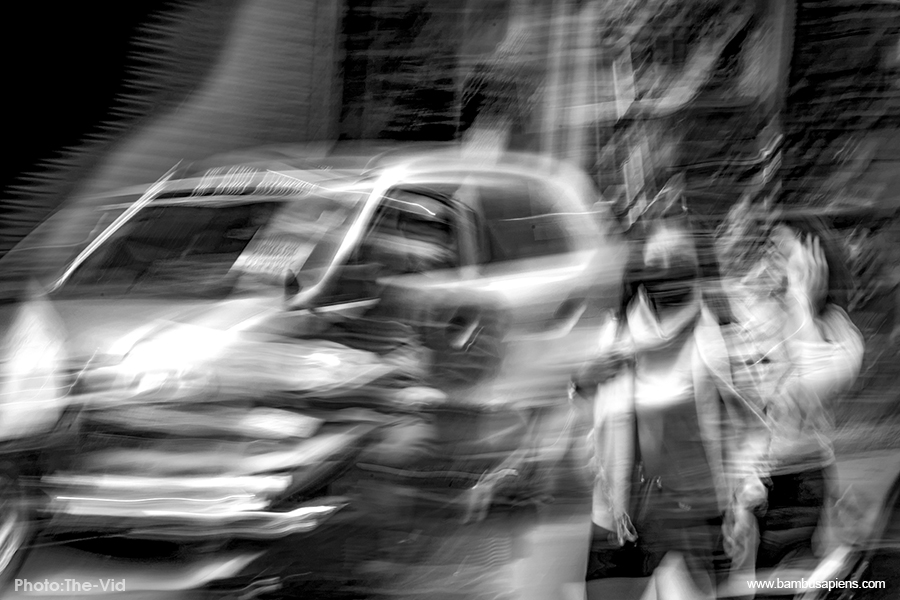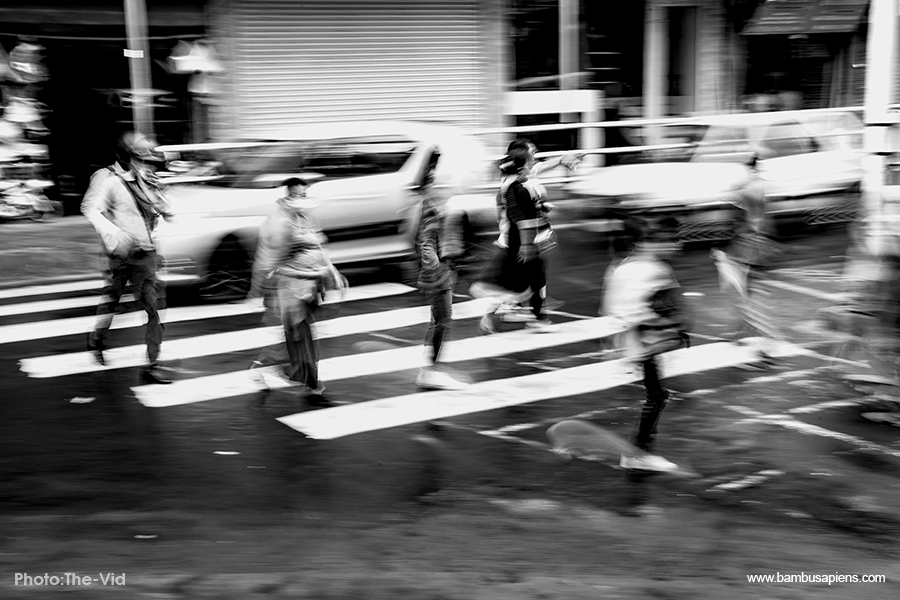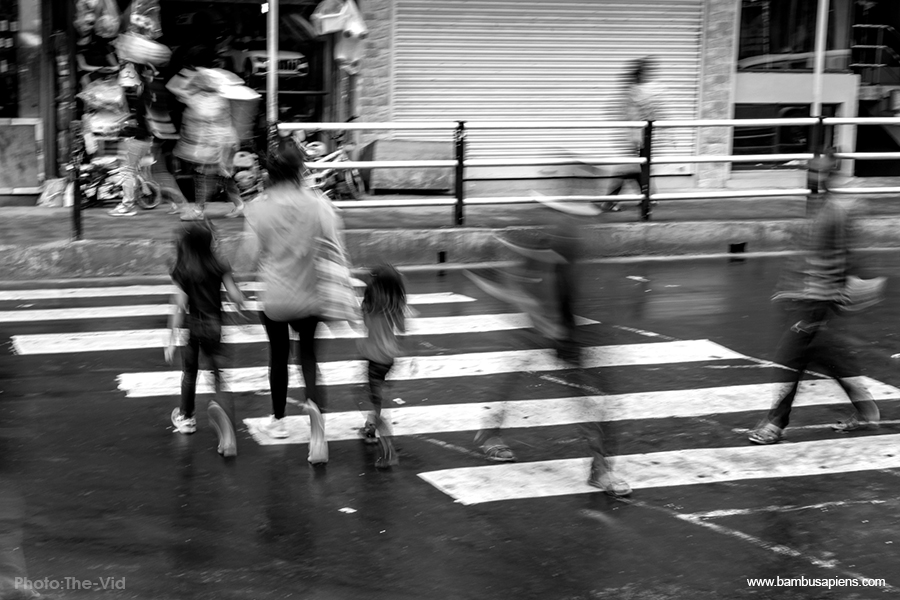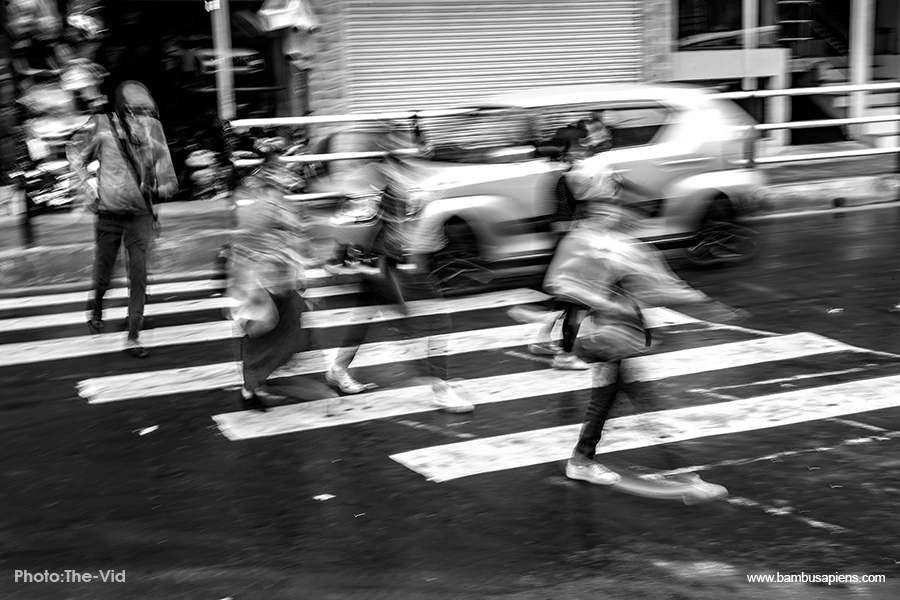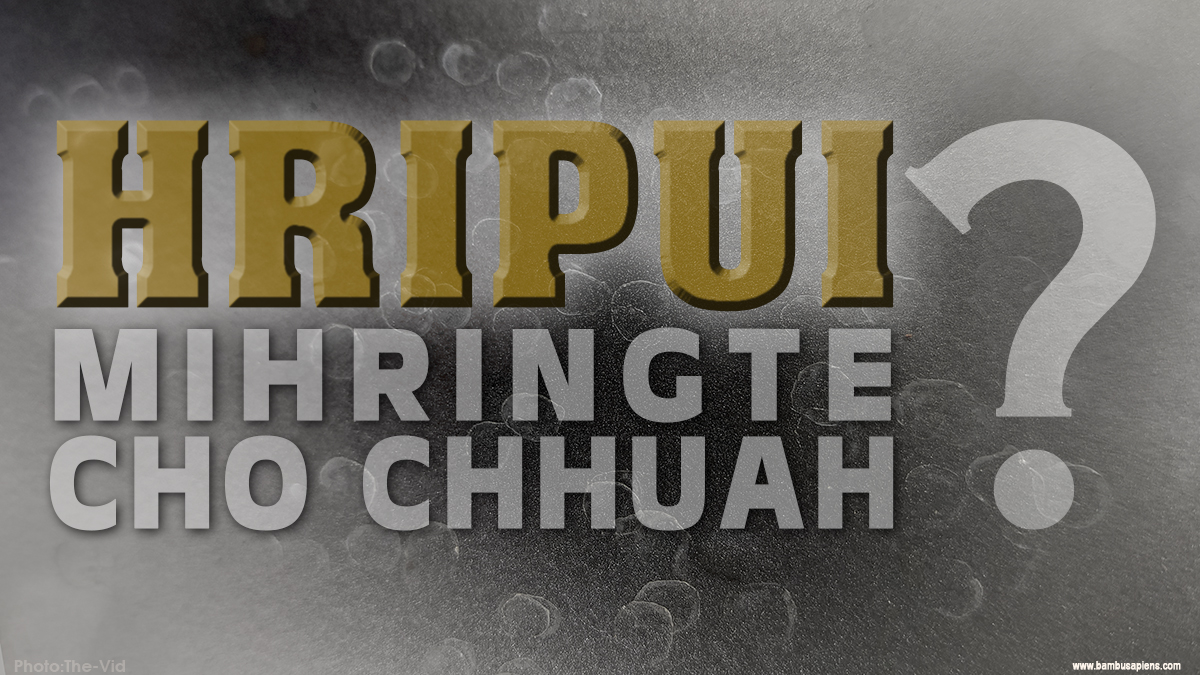Khawiah emaw hri a leng fo thin. Hri a len hian han chhui han chhui ila mihringte vang a ni tlangpui thin. Heng hrileng te hi thilsiam tinreng te a lo inbuk tawk leh theihna tura Khuanu remruat a ni…
Khawvelah hian hri a leng fo a, a ṭhen chu hmun zimteah a leng a (endemic), a ṭhen chu hmun zau zawkah (epidemic), a ṭhen erawhin khawvel pum a huap thung (pandemic). Mizoramah pawh hrileng kan tuar ve fo a, 1918 bawr vela “influenza” kha kan tawrh nat ber a ni mai awm e. Khaw ṭhenkhata Zawnghri leng kha an tuar viau bawk. Hri hi engvanga leng ṭhin nge ni ang tih hi zawhna lian tak a ni ang. Chhan hrang hrang a awmin a rinawm. Mi ṭhenkhat chuan ram engemawin ralthuam (Bio-weapon) atana an siam a nih an ring a, ramsa aṭanga kan kai chhawn ni a ngai an awm bawk. Tun ṭumah hian Ecology tarmitin kan thlir dawn a ni.
Khuarel thilthleng – Mihring vang
Khawvela thil thleng tam tak, “khuarel thilthleng” kan tih te hi khawvela chengten kan chenna kan enkawl danin a nghawngchhuah tam tak a awm a, mawhphurtu lianber te chu mihringte kan ni. Chu’ng khuarel chhiatna zingah chuan tuilian te, leimin te, thlipui te pawh a tel thei ang – In kan sak dan phung te, kawlphetha siamchhuahna tura tuikhuah avang te, boruak chhia kan tihchhuah nasat avang tea lo hluar ta an ni. Chutiang zelin khawvel sik leh sa danglam chak lutuk dan te, awmna hri te, dengue te leh khawṭhalo hri leng fote pawh hi mihringte khawsak dan phungin a tih hluar chhoh an ni ber mai.
Pathianin khawvel a duan danah hian thil engkim mai hi inbuk tawk leh inkamki tawkin, inmamawh tawnin a siam a, chu inbuktawn chu a lo danglam hlek hian harsatna eng eng emaw a lo piang ṭhin. Chung zinga pakhat chu hrileng hi ni ngeiin a lang. Hri hi mihring te chungah lo pawh a leng fo a, tun hnaiah pawh vawk pul hri te, arpul hri te, Saza hri te a leng a. Mihringte zingah pawh Ebola te, SARS te, Swine flu te, Avian flu te bakah nantna hri chi hrang hrang a leng ṭhin a, Covid 19 (SARS CoV-2) a leng leh mêk bawk. Heng zawng zawng hi a chhan dik tak hrelo mah ila, Ecological imbalance vang a ni thui hle tih a hriat theih.
Hripui léng tawh ṭhenkhat – Ecology tarmit aṭangin
- 1918-a Spanish flu, mi maktaduai 10 chuangin an thihpui, Mizote pawhin Influenza tia kan lo hriat leh kan lo tawrh ve pawh kha tui-sava aṭanga kaichhawna ngaih a ni a, kha hripui kha “Mother of all pandemics” (Morens and Taubenberger, 2018) an ti hial a. Khami a chinah khan a khat tawkin awmna hri (infuenza) hi khawvelah a leng renga ngaih a ni. Kha hripui kha Spain aṭanga darh nia ngaih a nih avanga Spanish flu tih a ni nain khatiang taka a darh a, hriatchhuah a nih hma khan vei engemaw zat an awm tawhin an ring a, kum 1917 khan a darh tawhah an ngai hial. A lo chhuahna bul tak pawh hi rindan chi hrang hrang a awm a, France a nih ring te, China a nih ring te, Britain a nih ring te pawh an awm bawk. Indopui pakhatna hunlai a ni a, Ecological crisis nasat vanglai tak a ni bawk. Indopui lai a nih avangin sipai raldote chu hmun chep tak takah an inêkbeng a, an eitur vawk leh sava lam chi – ar, vatawk adt. an vulh bawk. Tui-sava aṭangin vawkin a kaichhawng a, chu chu mihringin an lo kai chhawng ve leh ta ni a ngaih a ni a (Parrish et. al. 2015; Dunham et. al. 2016). Indopui laia sipai veivakten he natna hrik hi an pu darh nasa ni a ngaih a ni bawk.
- Ebola Virus kha bâk chikhat (fruit bat) aṭanga kai nia ngaih a ni a. Kum 2013-a a lo darh ṭanna hmun nia ngaih Africa khawmualpuia Guinea ram chhimlama Méliandou khua hi ramngawin a hual vel ṭhin ram a ni a. Guinea hian kum 30 chhung emaw zet chu kumtin ramngaw 1% vel zel an hloh a, Méliandou khua phei hi chuan theihmun atan leh oil palm hmun atan an ramngaw za a 80 zet chu an ṭhiat a ramsa leh mihring daidangtu a lo chhiat zel avangin ramsain natna hrik an lo mikhual kha mihringin an lo kai ta a, ramsa tana engmah nilo kha a insiam danglam (mutate) zel a, thihna rapthlak thlentu Ebola hripui a lo ni ta a ni (Dorit, 2015).
- Middle East Respiratory Syndrome Coronavirus (MERS-CoV) hi kum 2012 khan Saudi Arabia rama damlo pakhat aṭanga hriatchhuah chauh a ni a, Sanghawngsei aṭanga kai nia hriat a ni (Rasmussen et al. 2015). Sanghawngsei hian mihrhing a kaichhawn hma hian a reilo berah kum 20 emaw chhung tal chu an lo pai reng tawh a ngaih a ni a (Azhar et al. 2014; Meyer et al. 2014), eng aṭangin nge Sanghawngsei hian a kaichhawn a, mihringte tana hlauhawm a lo nih tak tih hi tun thlenga an la chhuichhuah theiloh a ni thung (Salkeld et. al., 2016). Kum 2012 aṭang khan MERS-CoV avang hian mi 858 vel tal an thi tawh a ngaih a ni (WHO).
Ramngaw chereu …Ramsa man/ei … Hripui leng
Heng natna hrik te hi ramhnuaiah, an mikhualna, ramsa taksa chhunga an awm mai mai hian mihringte tan a hlauhawm lem loh. Mahse ramsa te leh mihring te kardangtu ramngaw kan tichereu a, ramsa te nen kan inhnaih tur aiin kan inhnaih ta a; mi ṭhenkhatin ramsa an man a, an khawi a, an ei bawk a, chuvang chuan ramsa aṭanga natna kaichhawn theih (Zoonotics) avangin kan buai kan buai ta a ni ber mai. Heng natna hrik te hi an mikhualna – ramsate tana hlauhawm an ni lem lo, mahse mihringa a luh erawh chuan natna ṭihbaiawm tak a ni thei a, tin, ramsa aṭanga mihring ten direct-a kan kai kher loh pawhin ramsain ranvulhah kaichhawngin chu hrik chu a lo insiam danglam (mutate) a, tichuan mihring ten kan lo tawrh theih phah ta ṭhin a ni.
Covid 19 hi China rama Wuhan-a sa (nung leh nunglo) zawrhna aṭanga darh ṭan nia sawi a ni a, helai dawr hmun hi ramsa nung lai chi hrang hrang an zawrhna hmun nia sawi a ni bawk. Heng ramsate aṭanga kaichhawn hi ni ta bera ngaih theih a ni a, he hri a lo darh tak hnu lawka China sawrkarin ramsa zawrh leh ei a khap tak aṭang hian he thu hi an pawm tih a chiang viau awm e.
Pathianin a thilsiam chitin reng te tan ramri fel takin a duang a, mihringte hian kan ramri kan kân nasa ber a, min hungtu (envelope) pelin ke kan pen (de-envelope) fo ṭhin. Hei hi development (de-envelope/desveloper) ṭawngkam lo chhuahna bul nia ngaih a ni bawk. Hmanlai piputen an buh leh bal vennan vauah thang an kam ṭhin. An ramri pela mihringte thlawhhmaa luh tum ramsa chu an lo awk mai ṭhin. Pasalṭha Neuva pawhin a ramri a pel a, Val-upaten thiangloa an ngaih thlengin a tawnluia, a nunna a chan phah hial. Khuarel ramri (Khuavang ri khamsa nilo!) hi kan kân tikah harsatna leh buaina kan tawng fo ṭhin tih a lang reng mai.
Hriléng pumpelh
National Institute of Allergy and Infectious Diseases, Maryland, USA-a zirmite chuan heng ramsa aṭanga natna kan kaichhawn hi a zual telh telh an rin thu kum 2018 khan American Journal of Public Health-ah an lo puang tawh a (Morens and Taubenberger, 2018), David Quammen-a chuan “Ecosystem kan tihhchiat zel avangin a chhunga virus chi hrang hrang awm te kan ching chhuak mêk a, an chenna hmun kan tihchhiat miau avangin chenna thar, mihringah a rawn zawng ta zel a ni” a ti bawk. Mizo upa te pawhin “kan zun ekthli kan tuar ta love” tiin an chenna khaw hrisello chho zel chu pemsanin khawthar an kaiphah ṭhin bawk.
Tunlai khawvela hriléng te hi a bul ṭanna mai niin zirmite chuan an ngai a, hetiang zela kan chenna khawvel kan enkawl chuan a la hluar chho deuh deuh dawn niin an ngai. Tunlai khawvelah hriléng laka invennana khawthar kai maina tur a awm tawh lova, pemsan ngawt theih a ni lo. Zun, êk thli leh bawlhhlawh enkawl kawnga chet fai piahlam a ngaih zia a lang cho mêk. Natna hrik chi hrang hrangte ramhnuaia an awmna aṭangin va chingchhuak kher lo ila, kan himna kulhpui kan ramri hi kan lo ila, mihring zinga an lo luh ve theihlohna turin an chenna ramngaw humhalh zel ila, natna hrik pu darh theitu ramsa leh sava te man, khawi leh an sa ei sim bawk ila, tichuan hri hlauhawm lakah kan him zawk ang a, hrileng pawh kan pumpelh thei zawk ngei ang.
Thu laknate:
- Azhar EI, El-Kafrawy SA, Farraj SA, Hassan AM, Al-Saeed MS, Hashem AM, Madani TA. (2014). Evidence for camel-to-human transmission of MERS coronavirus. New England Journal of Medicine 370: 2499–2505.
- Dorit, R (2015). Breached Ecological Barriers and the Ebola Outbreak. American Scientist. 103(4):256.
- Dunham, E.J., Dugan, V.G., Kaser, E.K., et al. (2009). Different evolutionary trajectories of European avian-like and classical swine H1N1 influenza A viruses. J Virol. 83(11):5485 – 5494.
- Meyer B, et al. (2014). Antibodies against MERS coronavirus in dromedaries, United Arab Emirates, 2003 and 2013. Emerging Infectious Diseases 20: 552–559.
- Morens, D.M. and Taubenberger, J.K. (2018). The Mother of All Pandemics Is 100 Years Old (and Going Strong)! American Journal of Public Health. 108(11): 1449 – 1454.
- Parrish, C.R., Murcia, P.R. and Holmes, E.C. (2015). Influenza virus reservoirs and intermediate hosts: dogs, horses, and new possibilities for influenza virus exposure of humans. J Virol. 89(6):2990 – 2994.
- Salkeld, D.J., Stapp, P., Tripp, D.W., Gage, K.L., Lowell, J., Webb, C.T., Brinkerhoff, R.J. and Antolin, M.F. (2016). Outbreaks and Emergence of Zoonotic Pathogens. BioScience 66: 118–129.



